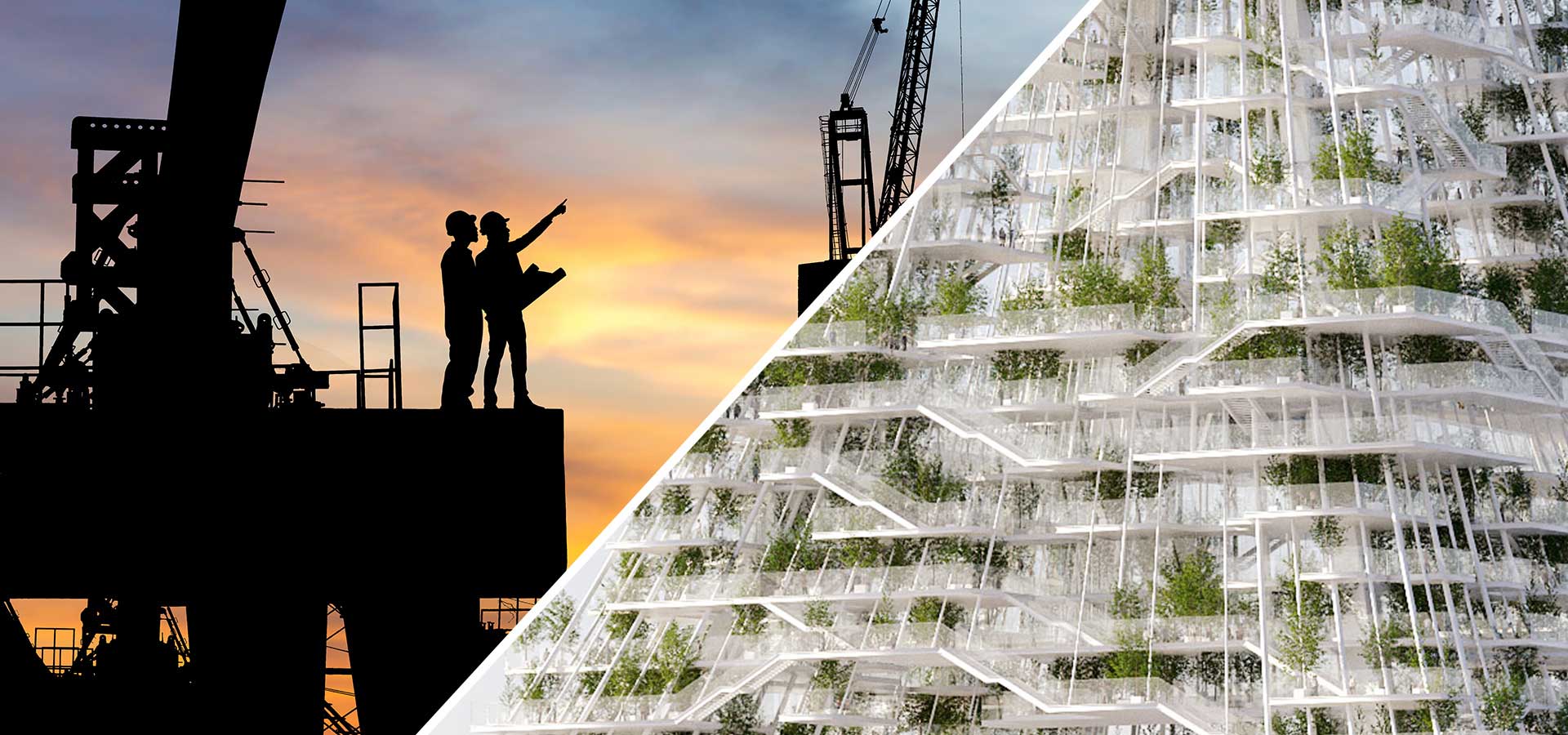A BRAVE NEW WORLD OF BUILDING
Productization shakes up the construction world and transform the value chain by accelerating the design, delivery, and assembly of unique and sustainable buildings.
Beyond prefabrication: shaping tomorrow’s sustainable construction through productization
When it was first built, the Eiffel Tower was a global marvel, notable for both its magnificent design and the state-of-the-art materials and methods used in its construction. The same spirit of innovation has been applied in the new tower project, which makes use of a technique called productization.
Inspired by the methods commonplace in sectors like automotive manufacturing, productization aims to transform our approach to construction by treating buildings not as standalone projects, but as an assembly of modular elements.
Rather than designing a building from scratch, building elements are selected from a pre-existing library of modules called Virtual Construction Bricks, designed using established data and knowledge from general and specialty contactors, and building product manufacturers.
These modules are prefabricated in offsite factories, assembled in near-site micro-factories and then installed and integrated on-site. This process requires fewer trade workers during the final assembly and installation process and limits waste across the project lifecycle. Such modules can also be unmounted and reused as needed.
This approach enabled the new tower designers to methodically consider all manufacturing and logistics constraints, and make decisions that support truly sustainable construction. Being able to trace each module as it is produced, transported, and assembled also allows manufacturers to monitor and minimize the environmental impact across a building’s lifecycle.
Throughout the process, the 3DEXPERIENCE® platform played a critical role in powering productization. Virtual twin solutions enabled teams to effectively manage a portfolio of product lines, generative module designs, and project data. Teams could also easily collaborate thanks to being able to work and share data on a common platform.
With productization, buildings are no longer one-off projects – a new, modular approach allows for both building elements and know-how to be reused across projects. This creates substantial savings in time and cost, improves quality, and helps realize truly sustainable buildings.
Check at our experts' testimonials about why and how to adopt Productization
Productize construction know-how to sustainably build right the first time
Discover more about the future of Infrastructure and Cities
What’s next? How to act now? How to measure your impact and identify the skills to transform?
Deep Dive Now
© design of the new tower by Nicolas Laisné Architectes

